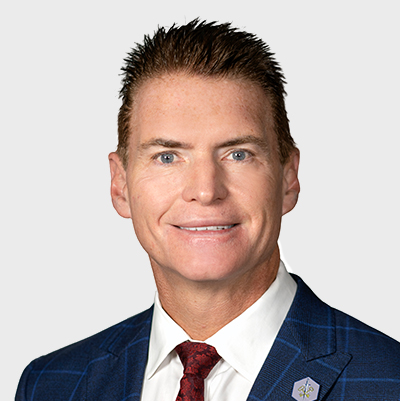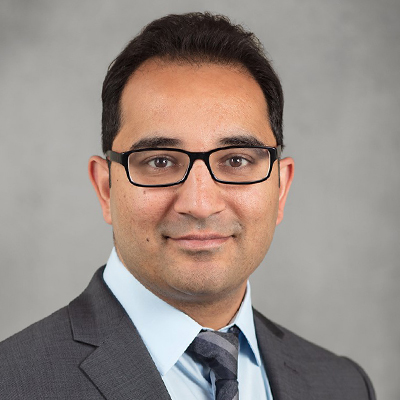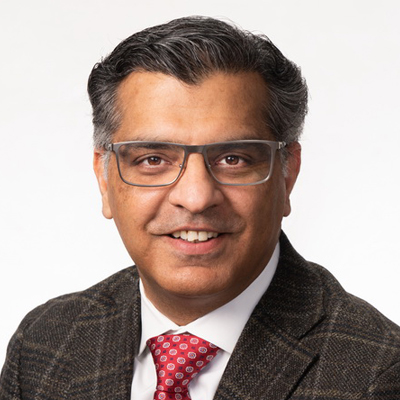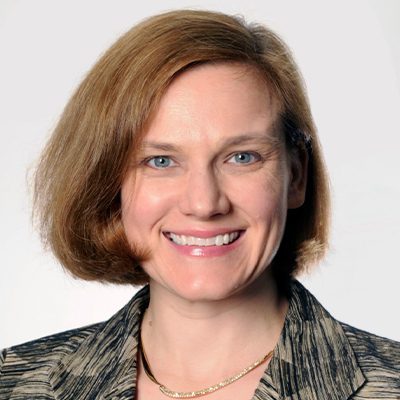Building Bridges To Better Healthcare
IN THIS ISSUE:
- Chairman’s Corner
- Annual Meeting
- Advocacy Alert
- Abstract Publications
- Young Innovators
- Fellowship Corner
- Diversity and Inclusion
- President’s Corner
CHAIRMAN’S CORNER
The Do Nothings
Recently I had a post on LinkedIn that received a lot of attention. The photo was me and my friend, Pascal, at the swim start of the Ironman Puerto Rico. We were kicking off the race at the swim start and both went on to earn a spot in the Ironman World Championship. In the post, I quoted Nick Saban, an old West Virginian and famous Alabama football coach on the interaction of high achievers and mediocre people.

“Mediocre people don’t like high achievers, and high achievers don’t like mediocre people.” – Nick Saban
To cut to the chase, neither prefer the company of the other. I think we could analyze this negatively or positively. I chose to think of this as a challenge. How can we make more of our friends, colleagues, and even those who tend to be negative towards those whom they hold professional jealousy for, better?
I thought I would use this soap box to make a few recommendations.
- If you are a high achiever, never be satisfied. You are one bad move away from going backward. On the other hand, you should ask yourself: Can I raise even higher? And much like Michael Jordan, can you elevate those around you?
- If you are on the cusp of making a major impact, surround yourself with those who have the characteristics of those you want to emulate. Let’s push it to the next level.
- If you are mediocre and you are happy with the average success, be the best you can at the level you are currently, but don’t be negative towards those making an impact.
- A high achiever can make an impact at any level. The best in your town, a key policy maker in advocacy, a great researcher, a mentor to others, or a great skilled proceduralist. Don’t let someone else’s path determine what you should be or do. You be you.
- If we all give support, we can raise the water and raise all boats. We can improve your level of achievement no matter where you are currently if we work as a team. The key concept of ASPN is to find like-minded people who want to root for, encourage, and actively work to make those around them more successful.
- If you are a hater, please join some other society. Our tent is big, but there is no room for you. If you read this and want to change, of course, reach out to us. We are here to help you.
So, in summary, let’s go. We can make life better for patients in the United States and around the world, but we must work to help each other.
2024 ANNUAL ASPN MEETING
To our ASPN global pain community,
I wanted to take this opportunity to encourage you all to attend the 6th annual pain conference taking place in Miami, Florida, July 11–14th, 2024. This year the theme of the annual meeting is “Building Bridges to Better Healthcare.”
In the last six years, we have seen unprecedented growth in our specialty and a rapid change in our identity to focus on novel interventions that are changing the landscape of pain medicine to pain and spine care.
As we see this shift in therapies offered and ever-expanding treatment algorithms, we must be mindful that a collaborative approach among the multitude of disciplines offering pain care will be critical to ensure clinical outcomes and broad scale access.
This diverse melting pot of ideas, innovation, and collaboration will require an effective building of bridges that are supported in strong research, data, and clinical outcomes.
The 6th annual meeting will continue to build on the ASPN legacy of collaboration, science, and exceptionalism. So come join us in Miami 2024 to see what makes pain medicine the most exciting specialty in medicine.
ADVOCACY & ALERT
ASPN Advocacy & Policy Committee continues to advocate for its members. Here are some of the highlights we would like to share.
I. Cigna and eviCore expand coverage to Closed-Loop Spinal Cord Stimulation: Recently, we submitted comment letters to Cigna and eviCore regarding their Spinal Cord Stimulation medical policy.
This letter requested expansion of their coverage for Closed-Loop Spinal Cord Stimulation. With our strong advocacy efforts, both Cigna & eviCore have expanded their coverage for Closed-Loop Spinal Cord Stimulation effective May 1, 2024. Evoke® SCS System is now covered by all major commercial payers and Medicare, providing broad patient access for this important therapy to over 200 million covered lives.
II. Palmetto and Noridian MAC’s proposed a non-coverage policy for minimally invasive approach of SI joint arthrodesis which does not use a transfixation device.
ASPN led the charge on testifying during the live meetings and sent letters to both Medicare Administrative Contractors for reconsideration of the proposed language in LCD. The public comment period opened on March 28, 2024. Individual comments can be submitted electronically to Palmetto GBA at A.Policy@PalmettoGBA.com or B.Policy@PalmettoGBA.com no later than May 11, 2024. Palmetto & Noridian cover Alaska, Arizona, Arkansas, California, Colorado, Hawaii, Idaho, Iowa, Kansas, Louisiana, Minnesota, Missouri, Montana, Nebraska, Nevada, New Mexico, North Dakota, Oklahoma, Oregon, South Dakota, Texas, Utah, Washington, Wyoming, American Samoa, Guam, and Northern Mariana Islands.
III. ASPN collaborated with key stakeholders to meet with members of Congress & Congressional Staff on emerging issue of Independent Review Organizations (IRO).
As per healthcare.gov, the prior-auth denial rate ranges between 10–20% per year; there are additional cases where the insurance plan says “no prior auth required” or refuses to provide pre-determination and denies claim after the services are rendered. All such cases go to “Independent Review.” This industry is highly unregulated with no federal oversight. The quality of reviews is highly variable at inter- and intra-state level. This problem is currently in its metaplastic stage and needs urgent intervention to curtail its growth and spread.
IV. Unified voice in Advocacy:
ASPN collaborated with Federation for Pain Care Access (FPCA) along with other national and state societies to meet with CMS on March 20, 2024. We advocated for SI joint ablation procedure reconsideration, Facet joint LCD reconsideration, stringent criteria on scope of practice of providers who can perform interventional spine and pain procedures and onerous documentation to meet medical necessity criteria leading to physician burnout.
ASPN ABSTRACT PUBLICATIONS
NEURON SWEET (Painful Diabetic Neuropathy) and DETER (Device Infection Management) Guidance manuscripts are about to be published in The Journal of Pain Research.
The next NEURON publications in the works include:
- MIST 3.0
- Endoscopic Spine Therapies
- Artificial Intelligence in Medicine
- Treatment of Discogenic Disease
- Non-Surgical Low Back Pain
- Closed-Loop Spinal Cord Stimulation
- Peripheral Nerve Stimulation
- Best Practices for 60-Day Neurostimulation
- Best Practices for Use of Percutaneous Lumbar Decompression
- Critical Limb Ischemia
With the growing number of ASPN-led publications, we recognized the importance of creating a database that our members can reference. We have added a comprehensive list of the publications on our website. This list includes links directly to open-access journal articles that members can download and review.
The Annual Meeting abstract submission deadline has been extended to May 30, 2024.
In a collaborative effort between the Clinical Affairs Committee, the Scientific Committee, and ASPN faculty volunteers, the abstract review process is already underway. Top abstracts will be assigned podium presentation time and may be selected for publication in The Journal of Pain Research.
YOUNG INNOVATORS
Using AI and Digital Likeness Technology Can Help in Building Bridges to Better Healthcare
In the ever-evolving landscape of healthcare, the integration of artificial intelligence (AI) has emerged as a powerful tool to enhance patient care. One area where AI shows great promise is in the use of digital likeness technology to better educate and connect with patients.
Digital likeness technology, powered by AI algorithms, allows healthcare use to create realistic virtual representations of ourselves. By utilizing this technology, physicians can communicate complex medical information in a more visually engaging and approachable manner.
Educating patients about their conditions and treatment options is integral to their active participation in their own care. Traditional methods, such as pamphlets and brochures, often fail to effectively convey important information. However, digital likeness technology offers an innovative solution by creating interactive and personalized educational experiences.
By bridging the gaps in patient education and communication, AI and digital likeness technology have the potential to revolutionize healthcare delivery. Improved patient understanding and engagement empower individuals to make informed decisions about their health, leading to better adherence to treatment plans. As physicians treating chronic pain, we know that patient compliance can be just as important as the interventions themselves.
As with any emerging technology, there are ethical considerations that must be addressed. Patient privacy, data security, and the potential for AI bias require careful attention to ensure the responsible and equitable use of digital likeness technology. The Young Innovators should take the lead—as ASPN can help shepherd the safe and effective use of this technology in the specialty of interventional spine and pain medicine.
FELLOWSHIP CORNER
Advanced Procedures
In today’s dynamic landscape of pain medicine, advanced procedural training holds significant importance. As pain medicine fellows, changing paradigms in pain management necessitate a deeper understanding and proficiency in innovative interventions. These procedures encompass a wide array of interventions that offer nuanced solutions for complex pain management.
Mastering novel techniques in regenerative medicine, restorative therapy, and neuromodulation etc. are pivotal in addressing the multifaceted nature of chronic pain for multiple reasons. Firstly, these procedures and techniques expand our armamentarium, enabling us to tailor treatment plans to individual patient needs comprehensively. Secondly, they provide effective pain relief for conditions that may not respond adequately to conventional therapies. Lastly, they foster interdisciplinary collaboration, facilitating informed discussions with surgeons, neurologists, and other specialists, thereby optimizing patient care.
In the rapidly evolving landscape of pain management, staying abreast of cutting-edge procedures is essential for delivering evidence-based, patient centered care. By investing in advanced pain procedure training, fellows not only enhance their clinical expertise but also contribute significantly to advancing the field of pain medicine. Therefore, staying current with advancements in pain medicine requires ongoing education and training that will cultivate adaptability and innovation, equipping fellows to navigate emerging technologies and incorporate evidence-based practices into their clinical repertoire.
DIVERSITY AND INCLUSION
Diversity … the reason ASPN is ASPN. Bridging many physicians from every aspect of training together is why our interventional society leads all others.
Pain is a very complex symptom that really appreciates the diversity of understanding when it comes to interpreting what is actually producing pain. Having such diversity gives our society the ability to tap into the minds of our members and others, to help better construct medical understandings of what best treatments can be provided to patients.
ASPN is the leader in connecting equal opportunities to its members and fellows, thereby providing the best platform to excel in our industry.
As a member of our society, I can attest to the importance of why diversity means so much. Each committee is carefully selected to give our members the best possible opportunity to create equality in its panel.
We’ve learned along the way that having this diversity gives us a more meaningful understanding of how our patients deal and live with such conditions. Our members tap into their patients’ experiences to better provide treatments to all others
Diversity…is ASPN. I am proud to be a member of our society
PRESIDENT’S CORNER
Fellow members of the ASPN family,
In mid-July we gather again at the Fontainebleau Hotel in Miami Beach for our 6th Annual Meeting. This esteemed gathering promises to invigorate both mind and body.
We will engage in stimulating panel discussions and practical labs and enjoy cutting-edge scientific presentations. The traditional charity 5K run offers an opportunity to exercise for a worthy cause, while the morning Essentrics classes led by the renowned Dr. Alane Costanzo will leave you feeling rejuvenated. To top it all off, Saturday night holds the much-anticipated Miami Heat reception—a fantastic opportunity to connect with colleagues in a relaxed atmosphere.
The full agenda is now available on our website. I encourage you to explore the exciting sessions and register early to secure your spot. A heartfelt thank you goes out to Drs. Kathleen Meacham, Christopher Lam, and Natalie Strand. The Scientific Planning Committee, under their dedicated leadership, has crafted an event that promises to enrich and empower each and every one of us.
However, the ASPN experience transcends mere content. It is about fostering connections, about building bridges. Imagine your network as a vibrant tapestry, a web of connections waiting to be harnessed. Identify the key players who connect diverse disciplines and spark innovation. Seek out those with unique backgrounds—their multifaceted experiences unlock new possibilities for collaboration. Find your own way to be a bridge, and in doing so, you will become a conduit through which new ideas and connections flourish.
This year’s theme, “Building Bridges to Better Healthcare,” perfectly embodies the spirit of ASPN. Our diverse membership—a tapestry woven from clinicians of all specialties, scientists, industry leaders, and students—comes together to share knowledge, forge connections, and unlock the immense potential for innovation that lies within.
Join me in Miami! Let us build bridges together, expand our horizons, and embark on improving the future of healthcare for the benefit of all.








